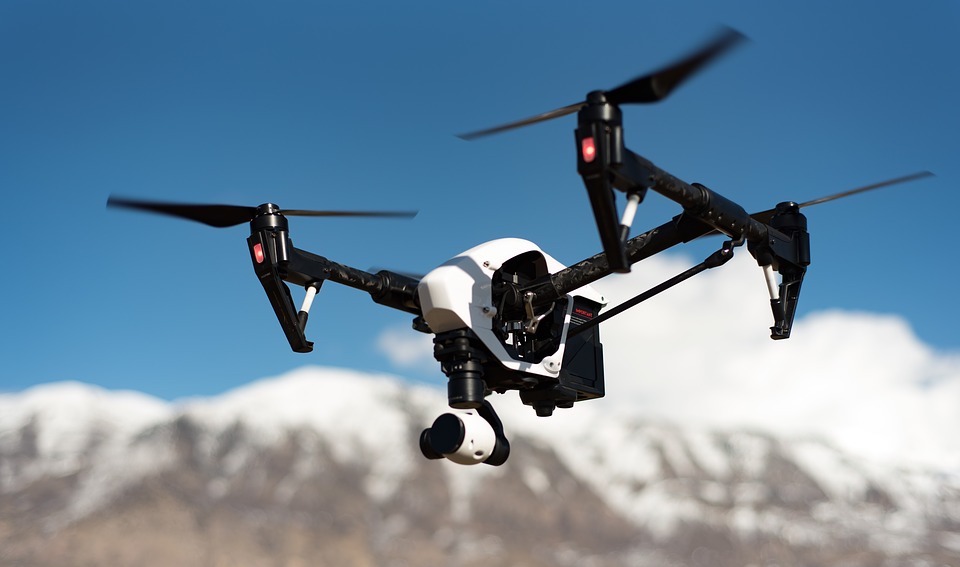Part 107 Certification vs. Section 333 Exemption
If you have just gotten into the drone hobby recently, then you have probably heard of Part 107. Specifically, Part 107 of the FAA rules regulates the use of small unmanned aerial vehicles, or drones, for commercial purposes. These commercial uses may include professional drone photography or videography, photography for real estate, construction surveys, or land monitoring.
What new drone pilots may not know is that, prior to the implementation of Part 107 on June 2016, commercial drone pilots were regulated under a different set of FAA rules. These rules, called Section 333, may be more familiar to the more seasoned drone pilots. In this article, we go into the key differences between Part 107 and Section 333, and try to answer the most common questions related to this matter.
How are they different?
We’ll declare it right off the bat: the Section 333 rules were much more complicated and took much longer time to comply to compared to Section 107. They were also more demanding in terms of skill and knowledge. With the rise in popularity of drones as commercial or recreational gadgets, the FAA formulated a set of rules that were more accessible and realistic even for the casual drone user. In what aspects are the two sets of regulations different?
1. Initial skill test
Under a Section 333 exemption, a drone pilot had to have an airman’s certificate with a sport or recreational level certification. Essentially, this is a manned aircraft license. Companies who will use drones commercially can apply for a Section 333 exemption, but whoever will pilot the drone will have to be a certified pilot.
In stark contrast to Section 333, a Part 107 remote pilot certificate can be granted to a person without any manned aircraft license. In lieu of this requirement, applicants for a Part 107 drone license will need to take and pass a 60 item multiple-choice knowledge test. This is done in one of many FAA licensed testing centers in the United States.
The Part 107 knowledge test is not to be taken lightly, though. It covers a wide range of topics related to drone flight, such as some aeronautics, weather, cartography, communication standards, and emergency procedures. Preparing for the Part 107 knowledge test will certainly require some amount of dedicated time for studying.
A person who has a Part 61 pilot certificate can more easily obtain a Part 107 remote pilot certificate by simply satisfying the flight review requirements, and completing an FAA online training course.
2. Requirement for medical certificate
Before a drone pilot can be given a Section 333 exemption, he or she must be provided a medical certificate issued by the FAA as proof that the pilot is fit to fly a drone. Under Part 107, a drone pilot is also required to be physically and mentally sound to pilot a drone. However, Part 107 does not require a medical certificate to prove the physical and mental state of a commercial drone pilot. Instead, the regulations rely on the pilot’s self-assessment of his or her own state of well-being.
3. Number of people required to fly a drone
A Section 333 exemption requires at least 2 people to fly a single drone: the pilot and another visual observer. The Part 107 regulation simplifies this by allowing the pilot to fly a drone alone as long as visual line-of-sight is maintained. In the case of FPV flight, a separate visual observer will be required to maintain the visual line-of-sight.
4. Time when flight is permitted
Flight is only permitted during daylight under a Section 333 exemption. This has been extended to twilight (dawn or dusk) under Part 107 rules, given that the drone is equipped with anti-collision lighting accessories.
5. Processing time
Owing to a more complicated set of requirements, processing a Section 333 exemption takes an average of 6 months. The process of obtaining a Part 107 certification has been significantly streamlined, and should not take any longer than 1 or 2 months.
6. Aircraft weight
One of the restrictions put in place to allow for the more relaxed rules of Part 107 is the limit of 55 pounds set for the weight of the drone. Drones that weigh more than 55 pounds can be flown only under a Section 333 exemption. What is the maximum weight of a drone that a Section 333 exemption will allow? That is subject to FAA approval, and will probably depend on how, where, and when a drone will be used.
7. Maximum altitude
Under both Section 333 and Part 107, a drone can only be flown up to a maximum altitude of 400 feet. However, Part 107 provides an exemption to this rule for drones. Within 400 feet of a structure, a drone can fly higher than 400 feet but not more than 400 feet above the structure’s upper boundary. This rule was made under the assumption that there will be no air traffic of manned aircraft near the aforementioned structure.
8. Operation from a moving vehicle
Operating a drone form a moving vehicle or aircraft is generally prohibited under both Section 333 and Part 107. However, Part 107 makes exceptions for flying a drone from a moving ground or water vehicle as long as flight is done over sparsely populated areas.
9. Incident reporting
Flight incidents are expected to be reported to the FAA under both Section 333 and Part 107, but Part 107 has reduced the requirement only to incidents that have cause serious personal injury o property damage amounting to $500.
How are they similar?
1. Flight restrictions
A number of flight restrictions implemented under the Section 333 exemption still holds valid under Part 107. These restrictions are listed below:
- Drones heavier than 0.55 pounds are required to undergo FAA registration, regardless of whether they will be used for commercial or recreational purposes.
- Visual line-of-sight must be maintained with the drone at all time during flight.
- Simultaneous operation of multiple drones by a single pilot is prohibited.
- Drones are only allowed to fly at a maximum speed of 100 miles per hour.
- Drones are not allowed to fly over people who are not directly participating in the drone flight activity, under a covered structure, on inside a moving vehicle.
- Drone flight is not prohibited in restricted airspaces and zones. Flight in controlled airspace needs to be cleared with air traffic control before it can proceed.
- Weather visibility needs to be established as far as 3 miles during drone flight. This also includes 500 feet of visibility below clouds, and 2000 feet horizontally away from clouds.
Validity
Both the Section 333 exemption and the Part 107 remote pilot certificate have a validity of only 2 years. After the 2 years, they will both have to be renewed. However, the two certifications have different renewal processes. A Section 333 exemption is renewed via a flight review, and the Part 107 certification is renewed by retaking and passing the knowledge test anew.
For pilots with a Part 61 pilot certificate, the Part 107 remote pilot certificate can be renewed simply by retaking the online training course provided by the FAA.
Do I need to get a Part 107 certification if I still have a Section 333 exemption?
If you still have a VALID Section 333 exemption, then we do not recommend getting a new Part 107 drone license for now. You can feel free to keep flying, as the Section 333 exemption you have rightfully earned gives you a legal allowance to proceed. Instead, you should use this time to familiarize yourself with Part 107 in preparation for the knowledge test that you will have to pass to get a Part 107 drone license.
If your Section 333 exemption has expired or is about to expire, then it is time to deliberate if you are going to renew the exemption or get a Part 107 drone license. As made apparent in this article, a Part 107 drone license can be more easily and quickly secured. However, Part 107 provisions may not be for everybody. Applications needing drones weighing more than 55 pounds (for payload delivery, for example) or needing to fly over people (for rescue operations, for example) have no recourse but to apply again for a Section 333 exemption.
The final word: Is Part 107 better than Section 333?
The Part 107 regulations released by the FAA were designed to make it easier for commercial drone pilots to adhere to more relaxed flight restrictions and certification requirements. Relative to the Section 333 exemption, the process of securing a Part 107 drone license has become much more streamlined and faster.
If your intended drone application falls well within the restrictions set by Part 107, then we suggest taking the simple route and applying for a drone license. However, the FAA recognizes that not all drone applications can follow the Part 107 restrictions and has still retained the provisions for applying for a Section 333 exemption. For highly specialized applications, applying for a Section 333 exemption appears to be the best choice.



